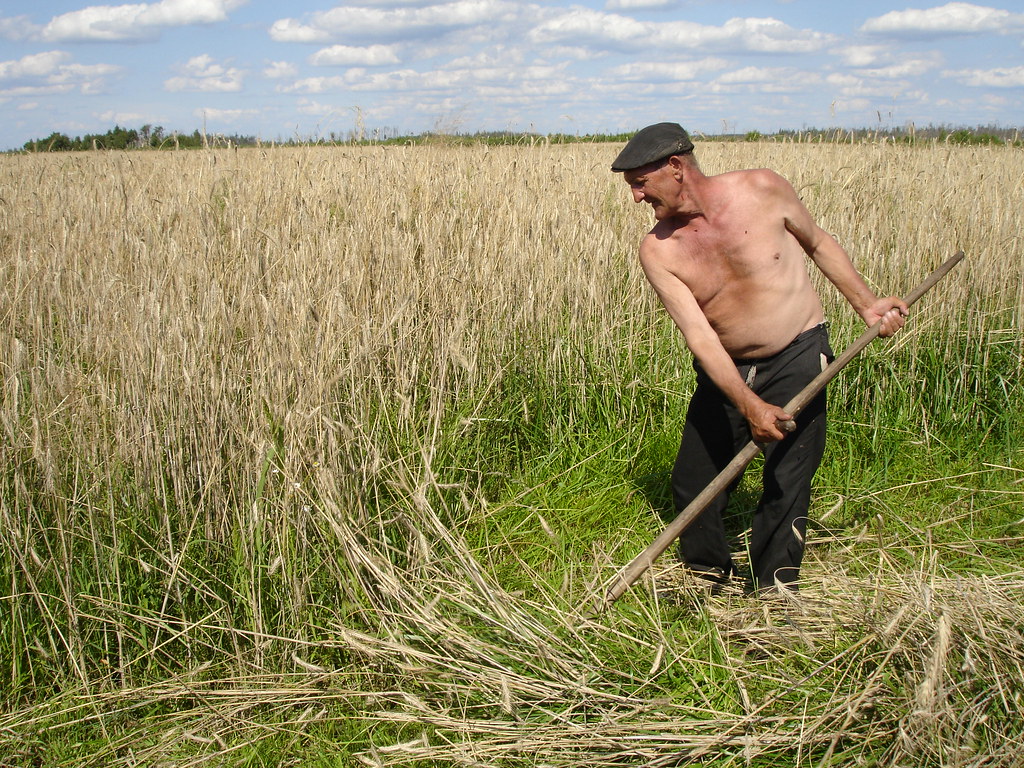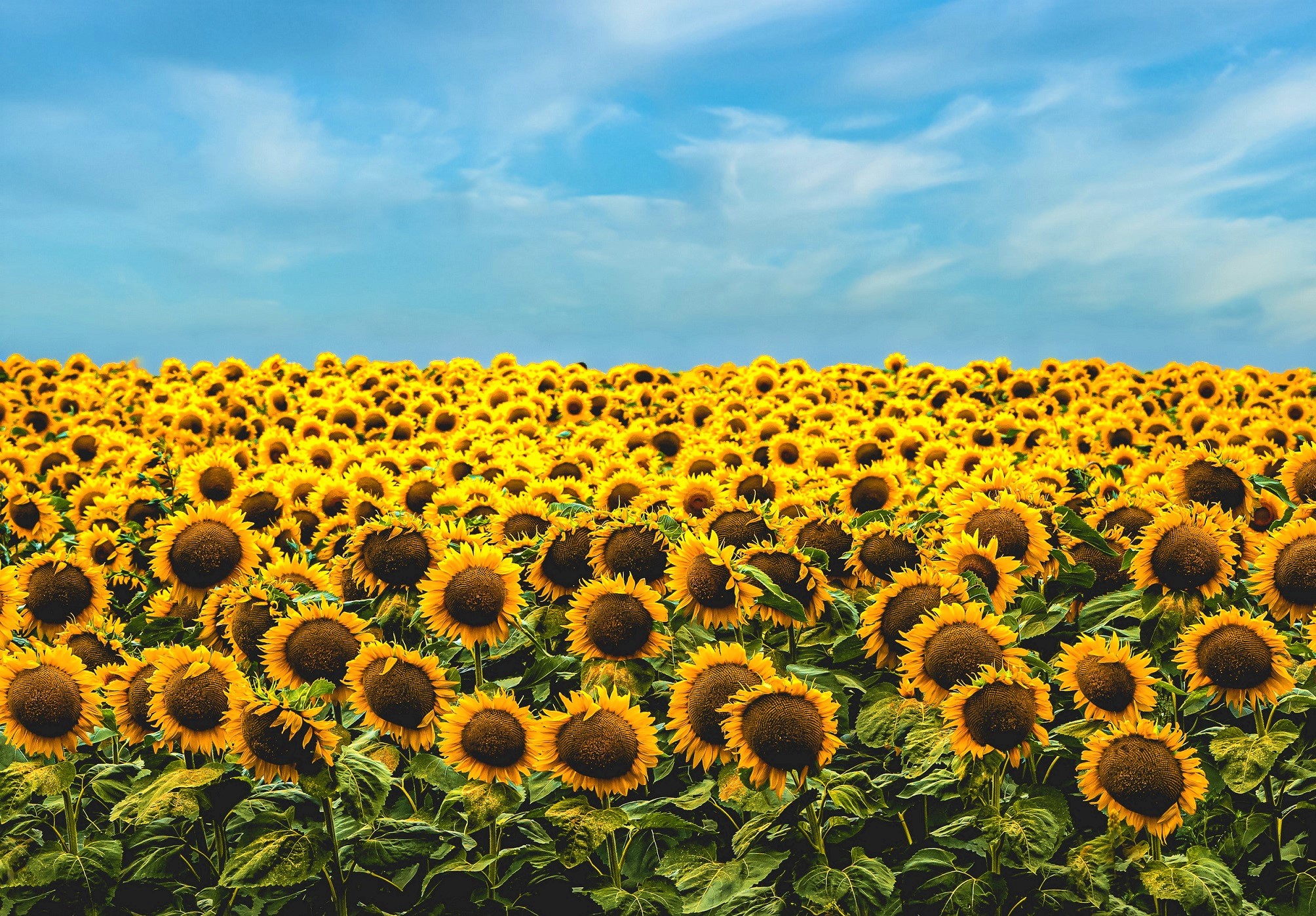Russia’s invasion of Ukraine is likely to cause food shortfalls in a world that has already pushed the boundaries of its carrying capacity to feed everyone.
With the war (I mean, “special military operation”) going on in Ukraine tying up two of the world’s top wheat producing countries simultaneously, there will be some special challenges this year for people who like to eat food. China and India grow vast amounts of wheat, of course, but most of it is consumed domestically instead of being sold on the world market. Russia, the top wheat exporter, comes in second or third, but they’re busy sending able-bodied potential farmworkers to invade number 9, Ukraine. With those two producing much less than they ordinarily would, the world is going to get a crash course this year in why carrying capacity still matters.
Carrying capacity, in this context, is how many human beings a given landbase can support indefinitely. It meant a lot, back when we were mainly hunters and foragers. If a flood, fire, or drought ruined the landscape, it wouldn’t be possible to import all the food people needed from far-flung places around the globe. It may seem like the tag team advances of agriculture, science and trade have canceled the idea that the carrying capacity of any particular country would matter anymore; after all, the conventional wisdom behind free trade is that we can all do better by making more of what we’re good at and trading it for everybody else’s surplus. However, that only works up to a point, and then it’s a disaster.
Take the United Kingdom, for example. They’ve been importing food for ages, as their population surpassed what could be fed by domestic production. These days, they’re importing about 45% of their food supply, mostly from EU countries. After Brexit threw a spanner into the customs processing works, one of the first disasters they faced was a food shortage. Trucks waited at the border, ships waited in port, and even a couple days of sitting around takes a toll on cargoes of fresh food.
Diversifying the food supply through imports can lend resilience to the system if local conditions fail, but depending upon imports to feed everyone means hoping really hard that supply chains remain stable and that trading partners are able to supply everything you need when you need it, forever. As we’ve seen them buckle and break during the pandemic of late, it’s easy to understand why being able to produce everything you need locally is a real life saver. Exceeding the carrying capacity of the local landbase is risky, potentially dangerous.
Which brings us back to Russia and Ukraine. Middle Eastern countries are major buyers of Russian and Ukrainian wheat, and supplies were already tight heading into the invasion. People are hungry there already. The United States withdrawal in Afghanistan and subsequent change in leadership plunged Afghans into the kind of famine that they’re selling their organs and their children to survive. Seven years of war in Yemen means their people are starving, too. Unaffordable food prices were one cause of the Arab Spring protests and revolutions in 2011. Back then, it was simply uneven food distribution, but if Russia and Ukraine can’t contribute as much of their harvests to the world’s food system, the difference in causes is less important than the real world results.

To their credit, Ukrainian farmers are carrying on with spring planting. Seriously, though, how many of those fields will be subject to some flavor of violent chaos before harvest time, and if some of wheat, barley, oats, and sunflower seeds make it to harvest, how much of it will get to market, and how? Ukraine is likely to be hungry. Russian troops are reportedly already looting Ukrainian backyard chickens. It’s not inconceivable that Vlad Putin will engineer a new Holodomor in his effort to subdue such a spirited opponent. If Ukraine’s population exceeds the carrying capacity of their war-damaged land, they will need everything they’re able to bring in this year.
Other countries could also increase their food production this year to pick up the slack. Germany, for their part, is bringing over a million additional hectares of land back into agricultural production this season to help mitigate the coming crisis. However, it’s not quite as simple as ramping up production. There are additional resources to consider, such as fertilizer and fuel. Together, Russia and Belarus supply 15% of the world’s nitrogen fertilizer, necessary for growing food where constant agricultural production has mined the soil and left it eroded and bereft of microbial life. Sanctions, combined with countries like China and Russia banning fertilizer exports, will complicate plans to simply grow more food somewhere else. And you probably already know that the price of oil and gas is on the rise, which will set farmers and distributors back much as it has the drivers of overly-large SUVs and people simply trying to get “back to the office.”
It doesn’t take much of a shortfall in any critical commodity to set off a crisis. It took less than a 10% reduction in the supply of oil to spark the energy crunch of the 1970s. Together, Ukraine and Russia account for more than 30% of the world’s wheat supply, but it doesn’t stop there. They also contribute just under 30% of the world’s barley, 80% of the global sunflower oil supply, and Ukraine alone produces 15% of the world’s supply of corn. People are going to be hungry this year. While agriculture and trade have temporarily increased the world’s carrying capacity for human life, maintaining our current population and consumption levels depend on very little going wrong.
There’s a lot going wrong right now.
Some solutions exist, though, and if you’re moved to do so, there are things that all of us can try to do in the short term.
First, and most obviously, try to grow some of your own food this year. Many people started doing so during the enforced solitude of the pandemic and continued through the supply chain failures last year, and it’s still a darn good idea to increase the “carrying capacity” of your yard or other land that you can access.
Second, find ways to consume less. When we cut back on gasoline use or eat lower on the food chain, that decreases demand and leaves more resources for someone else who needs them, too. Making full use of what we buy or grow, like planning all the errands to be made on one efficient trip or wasting less food, means we don’t have to buy as much. And keeping our needs simple means more to go around for everyone. An inconvenient price increase for one person may mean others are priced out of eating.
These efforts could help everyone get through a tighter 2022. However, in the long term, there are bigger challenges ahead. Countries are able to grow past their carrying capacity if they can import food from somewhere else, through economic or imperialist means. What happens when the entire world’s population has surpassed the planet’s carrying capacity and is only managing to keep going by mining the soil for nutrients, fossil aquifers for water, and is cracking rocks and power-washing compressed sand to eke out a bit more fuel? It’s a delicate system, easily interrupted by wars and economic turmoil, and we’re sure to have more of those in the years ahead as we start fighting over the things we need to live.
Related: The Grain in Maine (milk & veggies too!)


Join the conversation!